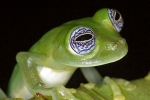StillAnotherGuest wrote:I think it would be far more efficient to watch for the aforementioned symptoms or lab tests:
Code: Select all
1. Change in oximetry trend (mean reading during night, spot check during day). Baseline and follow-ups may be obtained from original PSGs, serial PSGs and/or self-monitoring.
2. Change in screening spirometry values.
3. Change in complete Pulmonary Function Testing (PFT) values, particularly diffusion.
4. Symptomatic change in pulmonary function, as in decreased ability of aerobic exercise or increased shortness of breath on exertion
and then go back, do some history and look for commonalities.
SAG
Just a few thoughts since I am too tired to get into the deails tonight.
1. To my knowledge, there is no such thing as a certified aromatherapist. Aromatherapy is not a practice recognized or licensed by any governmental entity. To the extent that "aromatherpists" make medical treatment claims, they are practicing medicine and should be required to be licensed for that purpose, consistent with the laws of all 50 states and the federal government. Therefore, "certified" aromatherapists are not much more than New Age Quacks IMO. Gary Young (aka Young Living) right here in my home state calls himself a "Natureopathic Doctor" or ND. One of his "certified" practitioners (and presumably MLM marketer) had the gall to post on this site a claim that putting certain YoungLiving essential oils on your feet every night for a week would actually cure sleep apnea. While there may well be a medical basis for some therapeutic claims on essential oils (such as Goel proved with lavender and sleep), there is virtually no proof of any kind showing therapeutic benefits with one exception: A smell that an individual finds to be pleasant will probably help that person relax and feel calm. The sense of smell directly connects to the limbic system and therefore can affect our emotions for good or bad. That's pretty much what science has actually proven about smell. Human responses to smell are immediate and emotional. So that pretty much sums it up: Pure Hedonism.
2. There is almost as much misinformation about essential oil safety as there is about their miraculous properties. If you believe the safety claims, almost any essential oil will cause spontaneous miscarriage so pregnant women should avoid them like the plague. It's modern Patent Medicine aka Snake Oil, miracle cure for almost anything known to humans. Having sifted through a large amounts of unfounded trivia, I concluded that the best recognized source of information about essential oil safety is a book by that title by Robert Tisserand. Feel free to check it out from the library and read it. One of my favorite examples from Tisserand is the fact that, apparently beliveing the claims about essential oil causing spontaneous miscarriages, in a number of cases pregnant women have ingested essential oils hoping to cause an abortion. It has yet to work in any case--not one time. It made the mother sick but no magic abortion effect.
3. I have searched Tisserand extensively and found not a single reference to any questions about the questions SAG has raised and in particular the possibility of lung damage or function. This is probably because aromatic molecules are extremely small and would readily be absorbed by the lungs directly into the bloodstream, as Tisserand points out. This applies to all natural and artificual fragrances. The kinds of lung damage you're talking about involves substances that have much, much larger molecular sizes, big enough that they might actually become trapped in the lung, too large to be absorbed into the bloodstream. The maximum possible dose of essential oil that may end up in the bloodstream through inhalation would not be greater than the original dose dispensed, probably quite a bit less. A great many aromatherapy suppliers provide personal diffusion devices for people to use throughout the day or night around their immediate person, in their car, at the office. Room and office diffusers are also readily available as are incense burners and the like, together with a large variety of air freshener and cleaning products, all of which emit aromatic molecules into the air we breathe. Many aromatherapy books recommend the dispensing of essential oils right on the pillow or bedclothing. No one seems to be overly concerned about aromatic safety and lung damage in any of these applications.
4. To be sure, the fact that aromatic molecules may be absorbed directly into the bloodstream presents obvious toxicological questions, as would the absorption of any small molecule. Every time you smell a flower, strawberry shampoo, soap, lotion, bubblebath, or fabric softener, those little aromatic molecules are most likely going right into your bloodstream. For that matter, every time you drink soda pop, you are ingesting relatively large amounts of essential oils used to make the soda syrup (yes, soda pop "natural" flavors are essential oil based--lots of lime and citrus). Essential oils find their way into the food supply in surprising large amounts. Every pack of DoubleMint Gum is full of real peppermint essential oil. Big Red is packed with cinnamon leaf essential oil. When you chew this it ends up right in your lungs and in your bloodstream. Many, many products are packed with mint essential oil (or synthetically derived mint oil with basically the same molecules), from mouthwash to toothpaste, gum, breath mints, tic tacs, etc. This is why the Federal Drug Administration developed a list of essential oils that are "Generally Recognized as Safe" for human consumption. The list includes peppermint, lavender, lime, tangerine, orange, ylang ylang, vanilla, and the other essential oils used in PurSleep products. My understanding is that if they are safe for direct human consumption via ingestion they are safe for other forms of exposure, including inhalation since the molecules are readily absorbed into the blood stream just as they are readily absorbed into the bloodstream through digestion. At least that's how I read Tisserand.
In any event, if you are worried about lung damage and controlling the relevant variables, the inquiry should not be limited to essential oils. The concern would apply to any molecule that humans perceive to impart an odor (any aromatic molecule), whether natural or artificial. In order to control the variables test subjects would need to live in a plastic bubble for many months to get all of the aromatic molecules out of their systems. Body odor and flatulence would need to be immediately removed from the bubble so as not to impair the experiment. Unscented cleaning products only would be permitted, including deodorant. Only then could someone conduct a test to find out whether or not the PurSleep products caused lung damage.
That sounds a little too complicated to me. I prefer to stand by Tisserand's Essential Oil Safety and the FDA list of essentail oils that are "Generally Recognizes as Safe" for human consumption. I admit that I am not all that sophisticated and that I tend to be simple minded but I can't see how any aromatic molecule could cause lung damage. To my simple mind, anything that helps me use my CPAP is good. I would much rather live with the risk that my lungs will become completely plugged with tiny aromatic molecules than die from untreated apnea and/or one of its co-morbid conditions.
Try the Scented CPAP Mask with Pur-Sleep's CPAP Aromatherapy--CPAP Diffuser and Essential Oils.
"Love it, Love it, Love my PurSleep!"














